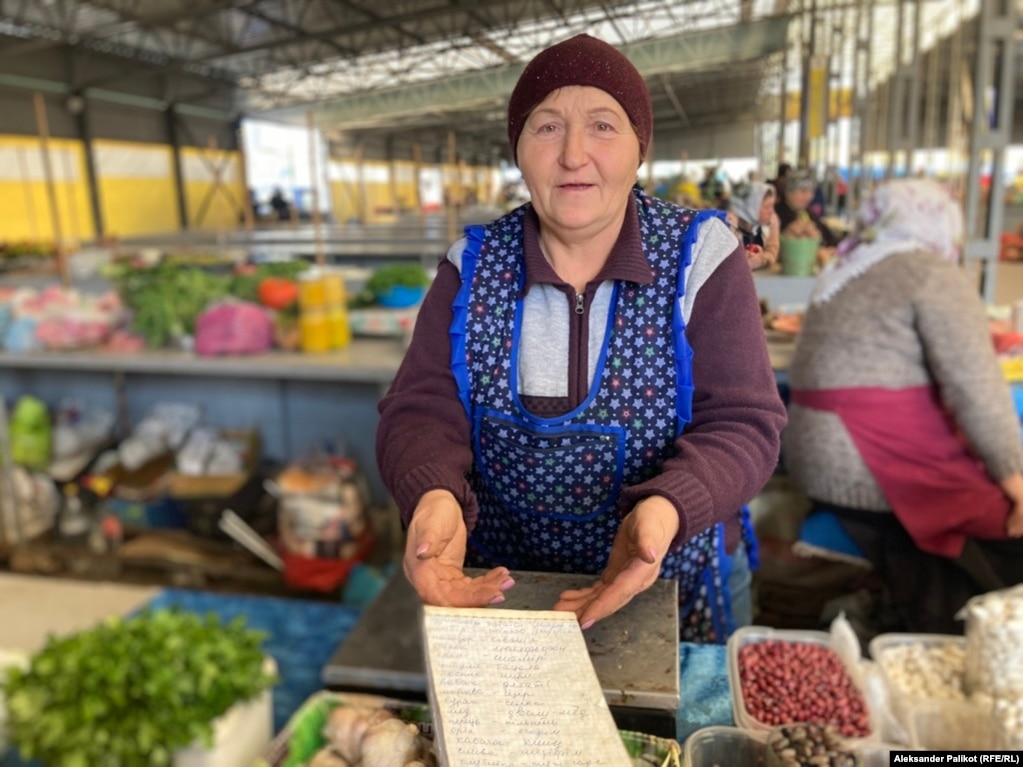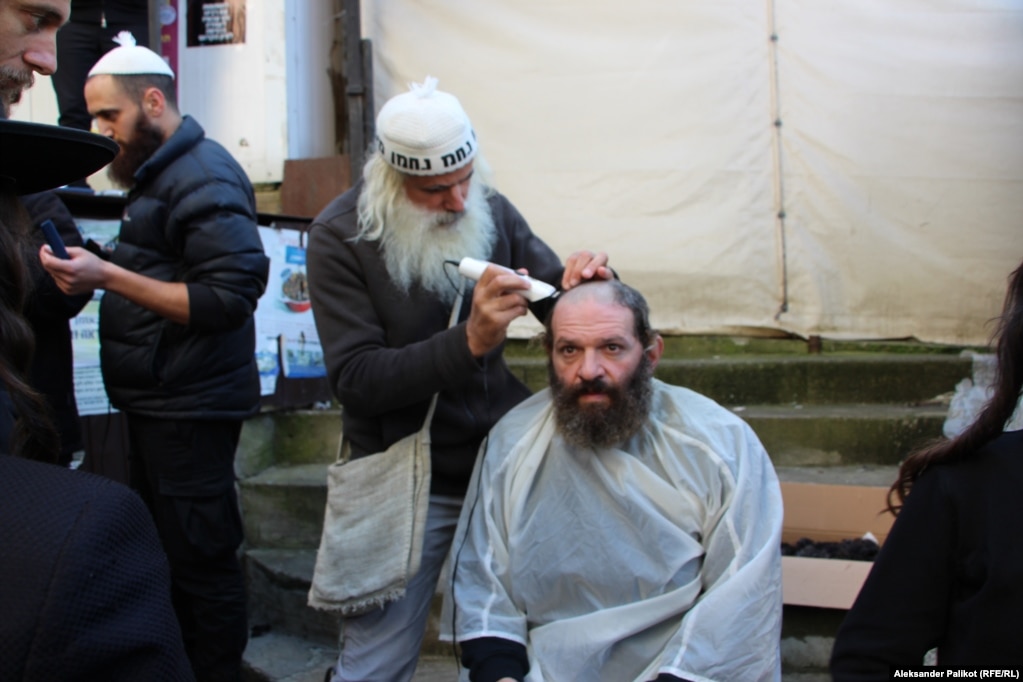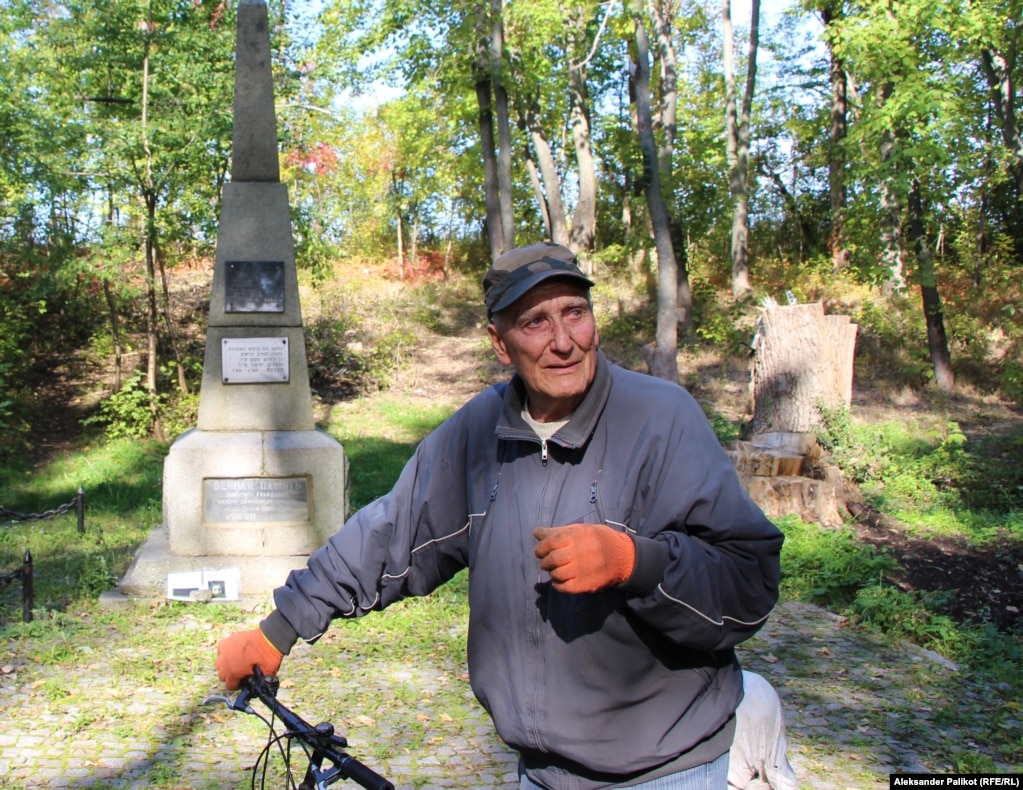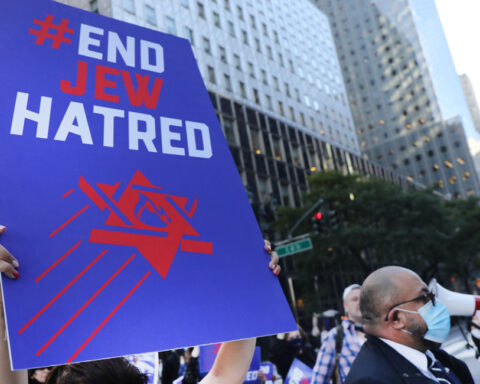UMAN, Ukraine — “Everything in this world revolves around Rosh Hashanah,” said Haim Hazin, looking at the crowd flowing through the main street of the Jewish district in this central Ukrainian city hours before the start the Jewish New Year.
The central Pushkin Street was buzzing with life. More than 23,000 pilgrims came here from around the world — mostly from Israel, the United States, Britain, and France — to pray at the grave of Rabbi Nachman of Breslov, the legendary founder of the Breslov Hasidic movement and the grandson of the mythic founder of Hasidic Judaism, the Baal Shem Tov.
Rosh Hashanah in Uman has been the destination of an annual pilgrimage for followers of the revered rabbi, who died here in 1810, for decades. Usually it involves ecstatic prayers, trance dances, techno music parties, and an unending kosher street food feast.
“But this year is different,” said Hazin, “because Ukraine is at war.”
A Hasidic Jew who left Israel for Ukraine over 10 years ago, Hazin swung into action when Russia launched its large-scale invasion of Ukraine in February, helping evacuate Israeli citizens, providing first aid kits to Ukrainian soldiers at the front, and dispatching an ambulance to the Donbas region, the site of a war that started in 2014 and which has seen some of the fiercest fighting since Moscow’s dramatic escalation this year.

Seven months later, Hazin was busy troubleshooting as he handled an array of arrangements for the annual event, picking up calls from pilgrims lost on their way, fixing broken water pipes, and ensuring that all the dinners in dozens of dining halls are cooked properly.
He said that celebrations this year differed from the norm as no “huge parties” were planned, the sale of alcohol was banned citywide, and the nationwide 11 p.m. curfew meant the nights were unusually quiet.
Praying For Peace
Long into the summer, it wasn’t clear whether the Rosh Hashanah celebrations in Uman would take place this year. After the Russian President Vladimir Putin launched the invasion, the Ukrainian authorities called on pilgrims to refrain from making the trip, saying they could not guarantee their safety. Israel’s Foreign Ministry also advised it citizens against coming to Ukraine.
A mid-size city about halfway between Kyiv and Odesa, Uman has been relatively safe during the war — but Russian missiles have pounded it twice, killing and wounding civilians. Due to its central location, it has quickly filled with displaced people fleeing the Russian onslaught in the east and south.
After lengthy state-level negotiations, Ukraine opened its doors to the pilgrims, but strict security measures were introduced, said Iryna Rybnitska, a lawyer from the Rabbi Nachman International Charitable Foundation, which oversees the organization of the Rosh Hashanah pilgrimage. The Jewish district was closed off to people without permits for the period of the celebrations, and order was enforced by numerous police officers.
“Wow, I made it! This is what we all feel,” said Merdi Lichter, who flew from Israel to Moldova and then made his way to Uman overland. He has been coming here every year since 1988, and his father managed to visit Rebbe Nachman’s grave in 1971, back in the days when the Hasidic life was almost non-existent in Soviet Ukraine.
Pilgrims of all ages and walks of life traveled to Uman by car or train from Romania, Moldova, Hungary, Slovakia or Poland, as Ukrainian airspace is closed to commercial traffic.
The numbers were moderately lower than in years before the COVID-19 pandemic and the Russian invasion, but the air of defiance in Ukraine seemed to rub off on the visitors, who were not daunted by air raid sirens that sounded a few times a day.
“I am more afraid not to celebrate Rosh Hashanah in Uman than to come to a war-torn country,” Lichter said with a laugh. “Putin wants us to live in fear, but for us he is no one.”
Another pilgrim, Shalom Olefshyts, said he was afraid to travel to Ukraine at first, but later decided that Uman is far enough from the front lines to be moderately safe.
“We are used to air sirens in Israel,” he said. “And this place is special because it is protected by Rabbi Nachman”.
A sense of solidarity between the Hasidic visitors and Ukrainians amid Russia’s war on the country could be best felt in the streets of the Jewish district during a huge communal prayer for peace in Ukraine. Thousands of pilgrims raised their hands and raised their voices in song at the entrance to the building that houses Rebbe Nachman’s grave and in front of the yellow-and-blue Ukrainian flag displayed on the electronic billboard at the district’s heart.
“We are grateful to the Ukrainian government and everybody who made it possible to celebrate Rosh Hashanah despite this terrible war,” said Natan Bennoon, head of the Rabbi Nachman International Charitable Foundation. “We know what is war and what is terrorism, and we think that life has to continue no matter what the enemy wants,” he added.
‘We Get Along Quite Well’
Some visitors spent the last hours of the year 5782 by the Jewish calendar at the Uman market, shopping for terms such as handbags, toys for their children back home, and fresh food for the New Year’s table.
Tetyana, a local resident who has been trading at the market for 20 years and did not want her last name published, made a special dictionary with names of fruits, vegetables, nuts, and other products she sells translated into Hebrew and transcribed in Cyrillic.
“We get along quite well,” she said as she was greeting one of her long-time clients. “We have Jesus, and they have Nachman — we all need to believe in something, don’t we?” she said with a laugh.

Although Hasidism was born in 18th-century Podillya, a historic region in what is now southwestern Ukraine and northeastern Moldova, many modern pilgrims to Uman have no ancestors from Ukraine or are unaware of their ties to the country – or the bloodstained history of Jews in Uman.
In the mid-18th century, thousands of Jews living here were killed in a violent uprising of Cossacks and Ukrainian peasants. The Jews of Uman also fell victim to pogroms during the Soviet-Ukrainian War, around the time of the Bolshevik Revolution, and the Nazis murdered almost all Jews in the city in the Holocaust.
For the most part, followers of the Breslov Hasidic movement began to visit — and in some cases immigrate to Ukraine — after the collapse of the Soviet Union in 1991. Over the last three decades, Uman has regained its status as a center of Hasidic life in Ukraine. Today, more than 100 Hasidic families live here.
This does not mean that relations between Uman residents and the large numbers of pilgrims who come here every year are always smooth.
Issues such as tourist tax collection, organizing communal services, and street noise are a headache, some residents say. According to Rybnitska, instances of anti-Semitism or disregard for the local population have occurred but things are getting better every year.

Meanwhile, Hazin said that he meets with anti-Semitism more often in the United States and Europe than in Ukraine. He believes that Russia’s war against Ukraine — one of the goals of which has been by described by Putin, who falsely claims that Ukraine is ruled by neo-Nazis, as “de-Nazification” — will bring Jews and ethnic Ukrainians closer together.
“The people of Ukraine understand the suffering of a nation that others want to eradicate all too well now,” he said.
Past And Present
On the first day of the New Year, pilgrims in the Jewish district performed tashlikh — the symbolic casting of one’s sins into the water, which takes place in Uman every year.
The prayers of the crowd gathered by a lake mixed with a sharp melody played on a traditional shofar horn, and the unsettling scream of the air-raid siren. Some men dancing in a circle had to make room for a military truck trying to pass by.

A couple of kilometers away, Anatoliy Tyutyunik, an 83-year-old Uman resident, was riding his bicycle – carrying a bag filled with early-autumn vegetables – through a ravine known as Sukhoi Yar.
In 1941, between 5,500 and 6,000 Jews were shot dead at the ravine by the Nazis – a massacre that, like Babyn Yar in Kyiv and many similar mass killings across Ukraine during the “Holocaust with bullets” — was cast by the Soviet government for decades as targeting “Soviet citizens” rather than mainly Jews.
Today there are no signs leading to the Sukhoi Yar in Uman, and it is rarely visited by tourists. When Tyutyunik saw a crew filming near a monument close to the site, he stopped and looked surprised.
“It’s good to know the history,” he said with tears in his eyes, recalling the Jewish friends of his youth who left the city in the Soviet era and his relatives who fled the war this summer. “You can then compare the past and the present and draw your own conclusions.”



